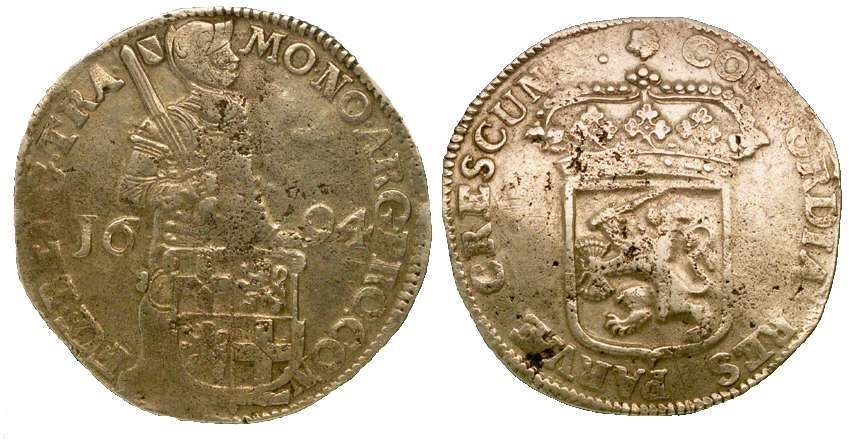Dutch Republic:Money
From Marteau
1 Zilveren Rijder (Dukaat), Utrecht 1694 | 
|
History
All of the seven United Provinces of the Netherlands – Holland, Overijssel, Zeeland, Gelderland, Groningen, Utrecht and Frisia – had the right to mint coins. Additionally minting privileges were also extended to the region of West Frisia (which was part of the province of Holland) and the cities of Deventer, Groningen, Kampen, Nijmegen, Zutphen and Zwolle. The 17th and 18th centuries became a period of remarkable monetary stability.
|
|
1450 |
32.40 |
Accounts were held in gulden, styvers and penningen, the gulden of 20 styvers, the styver at 16 penningen. 2.5 gulden made a Reichsthaler, the rate remained intact till the Euro arrived in 2002.
Important coins were the golden gouden dukaat (at 5 guldens, 5 stuyvers), the zilveren rijder or dukaat (63 stuyvers), the Nederlandse 3 gulden (60 stuyvers), the pattacon (50 stuyvers), the leeuwendaalder (40 stuyvers), the daalder (30 stuyvers), the Kamper daalder (26 stuyvers), the halve zilveren dukaat van Zeeland (26 stuyvers), the Emdense daalder (23 stuyvers), the scheepjesschelling (6 stuyvers), the stoter (2.5 stuyvers), the dubbele stuyver (2 stuyvers), the schelling (12 penningen) the duit (2 penningen).
Literature
Subpage of the Marteau Platform of Research in Economic History

